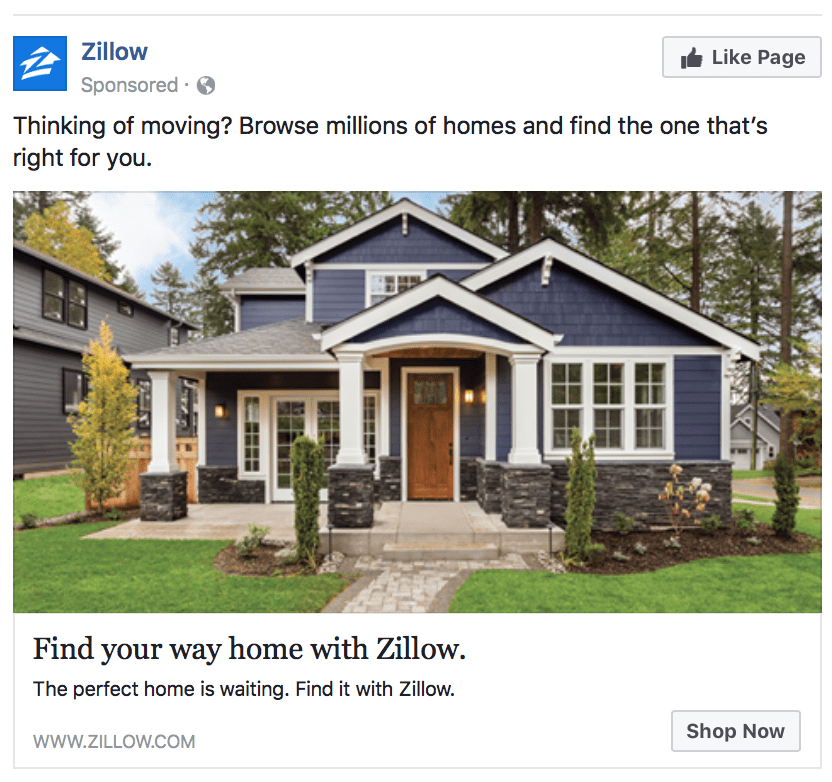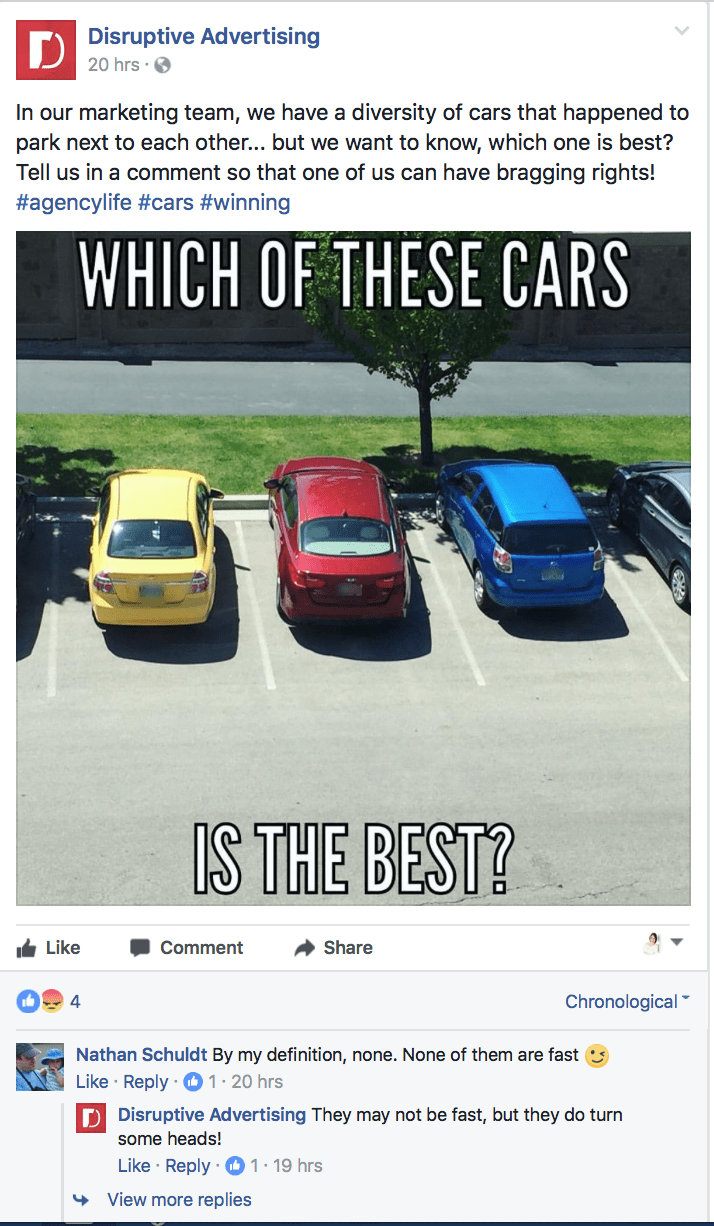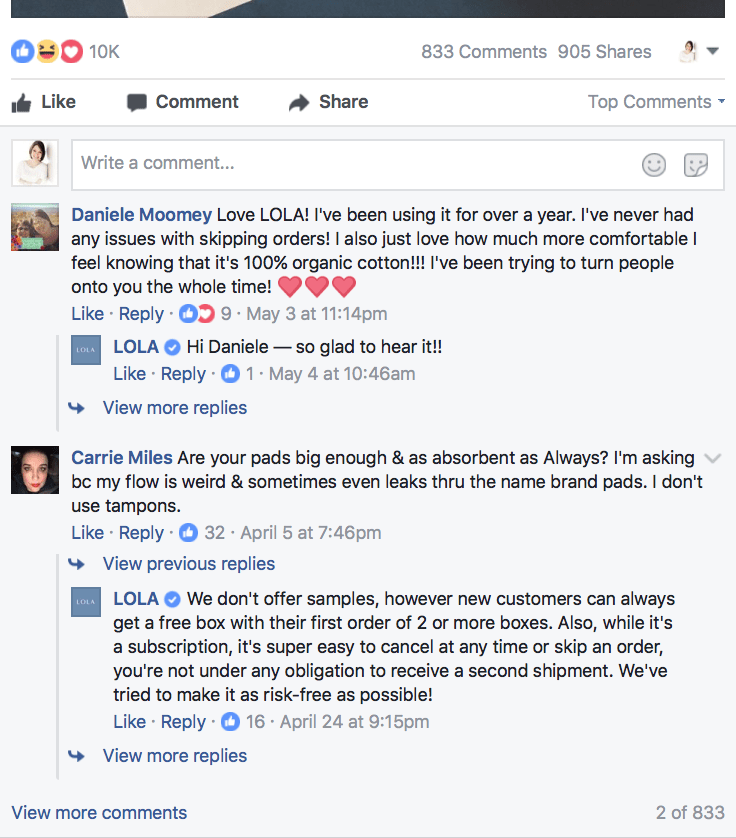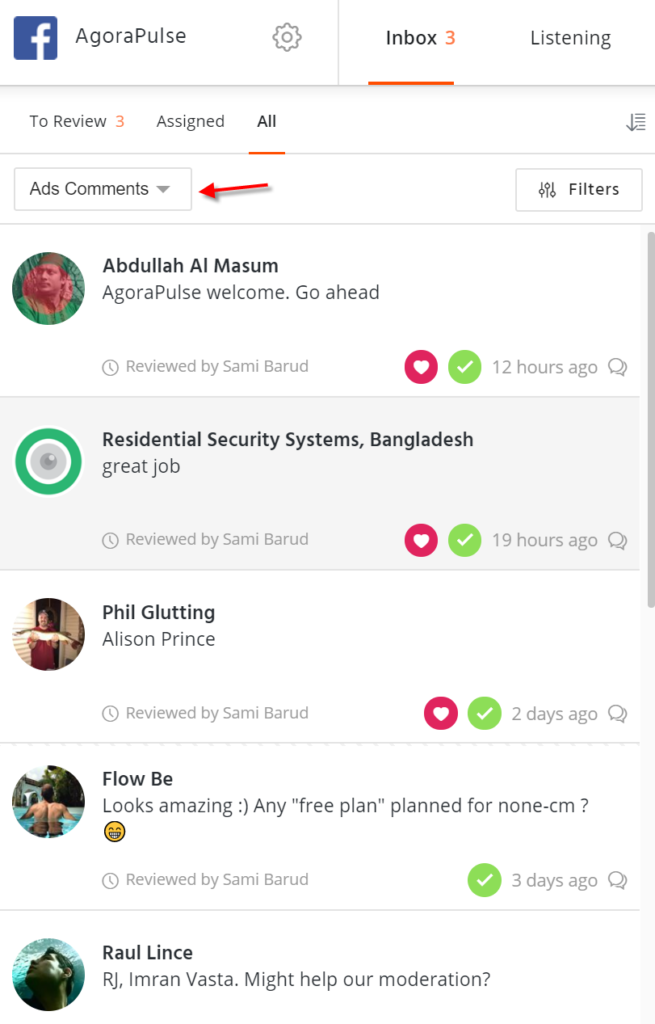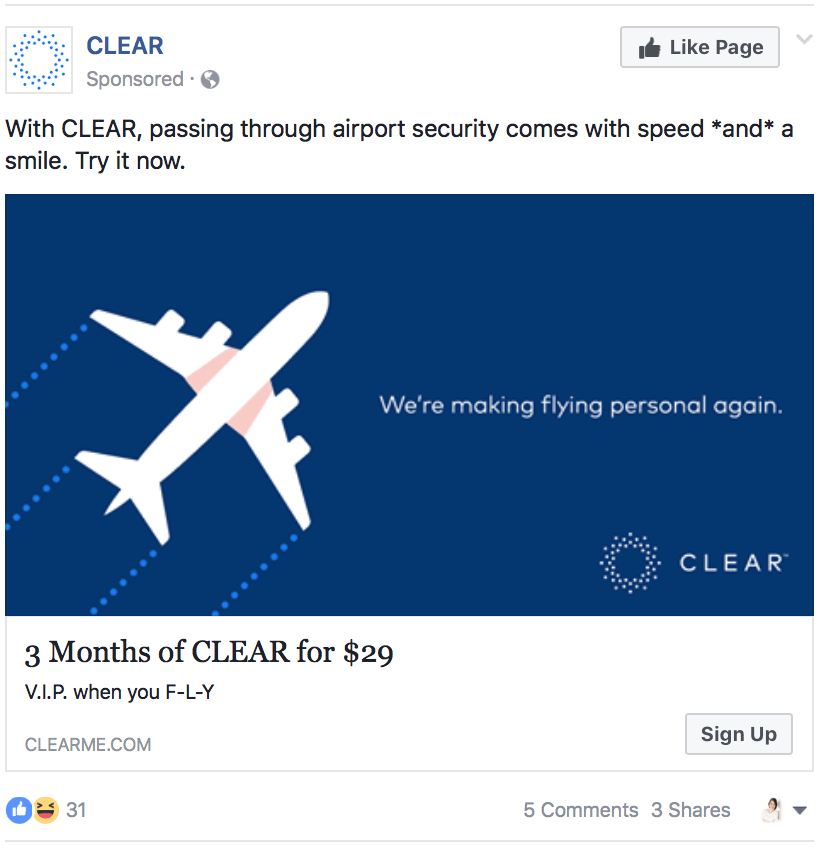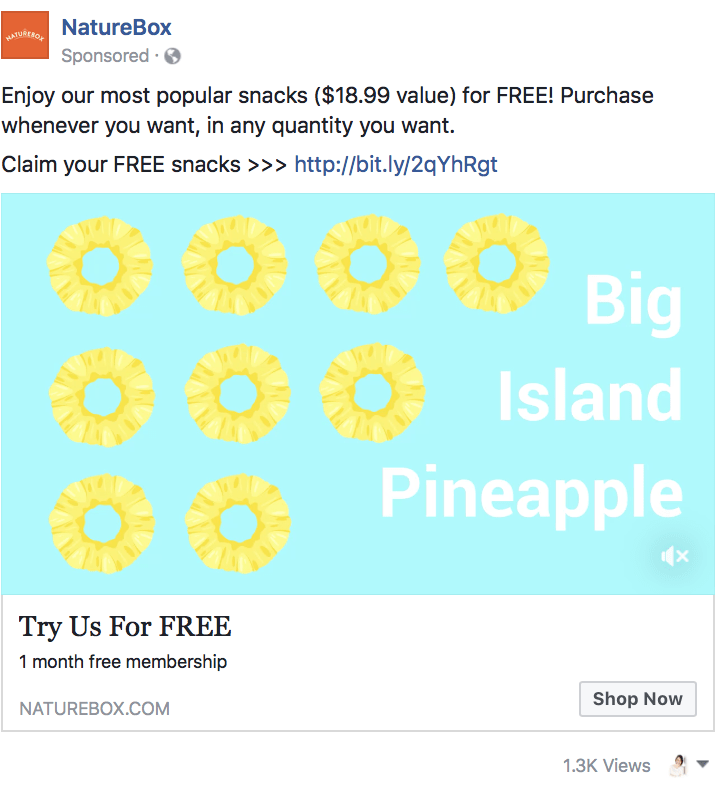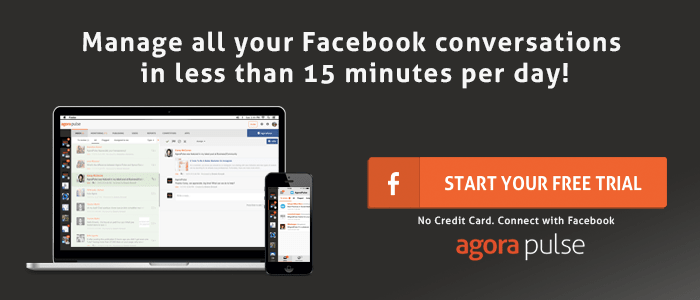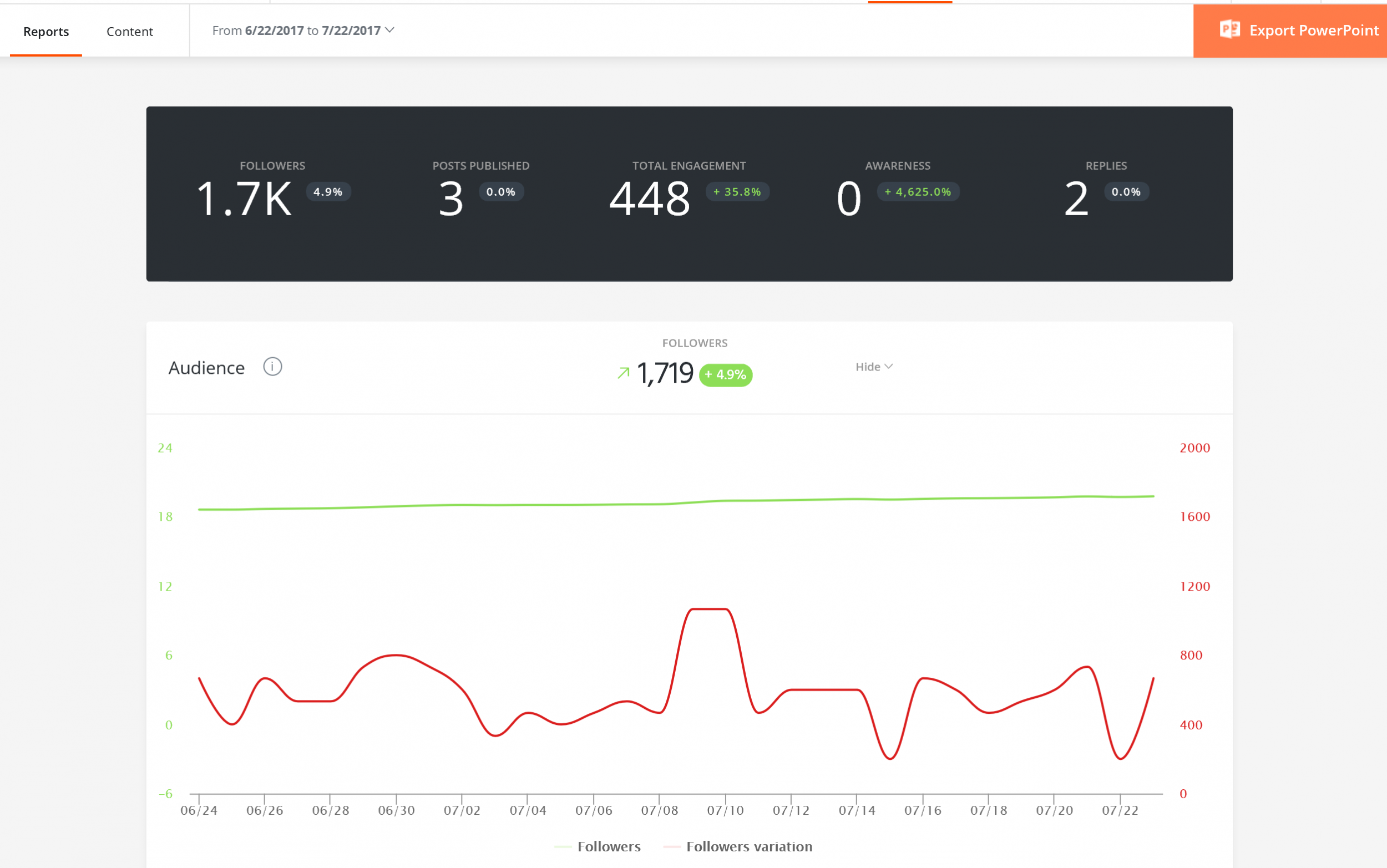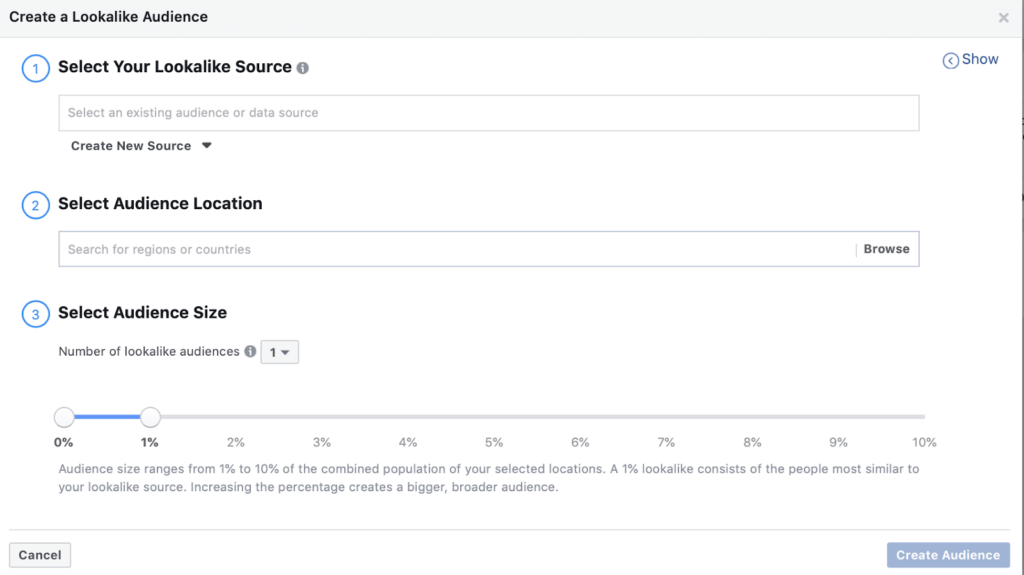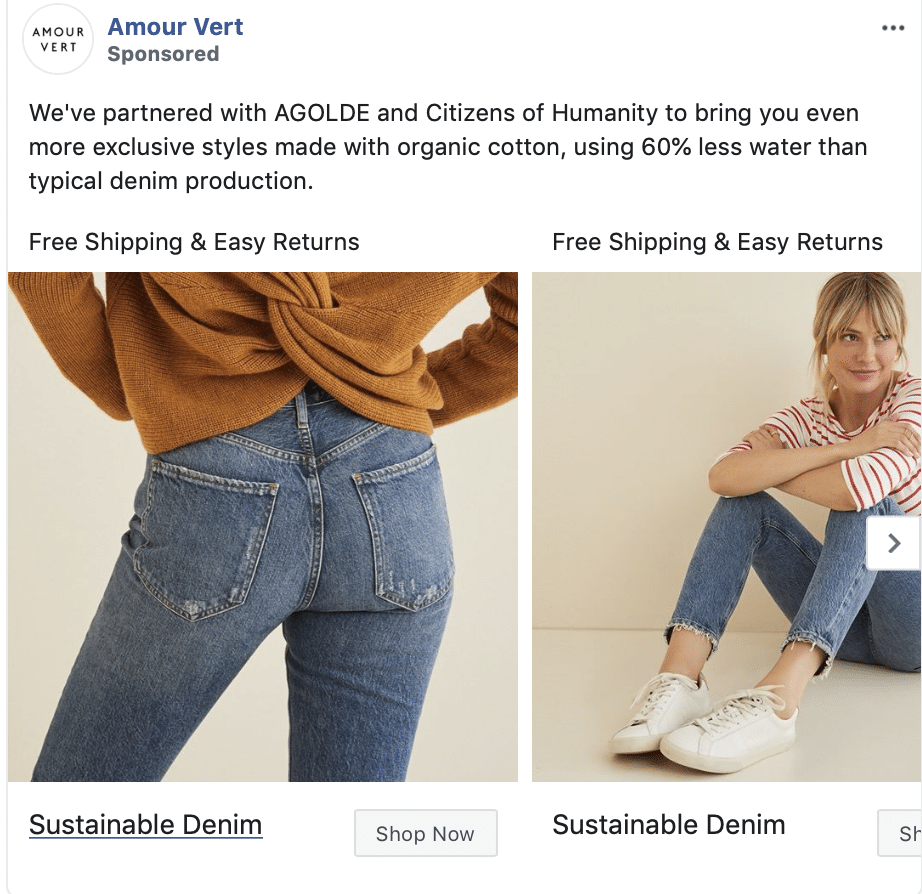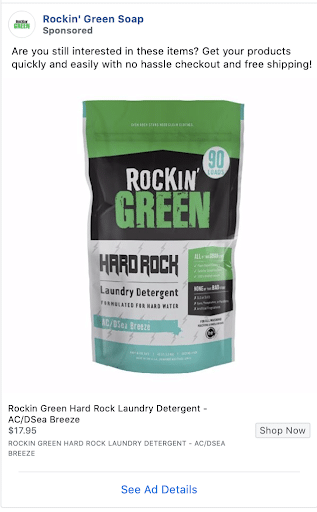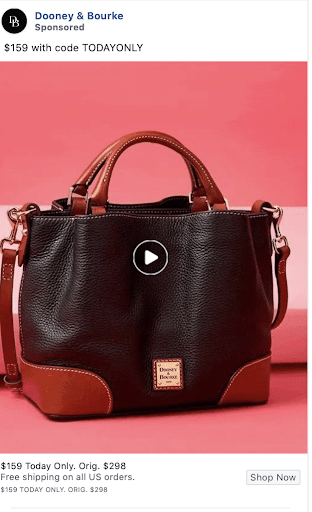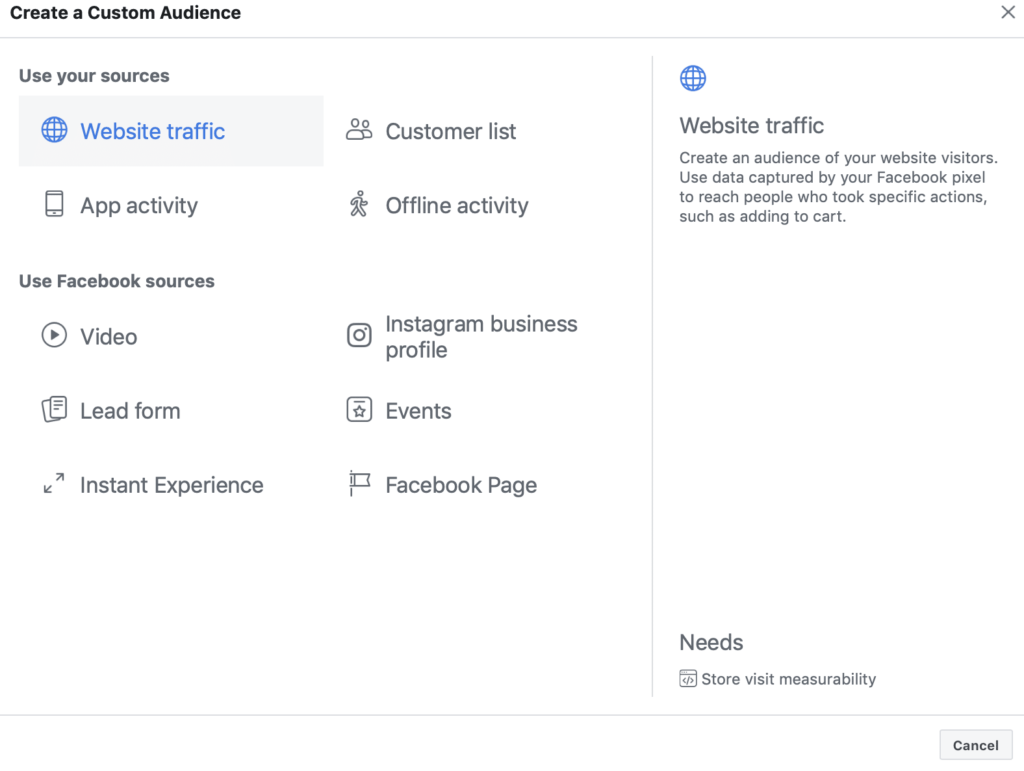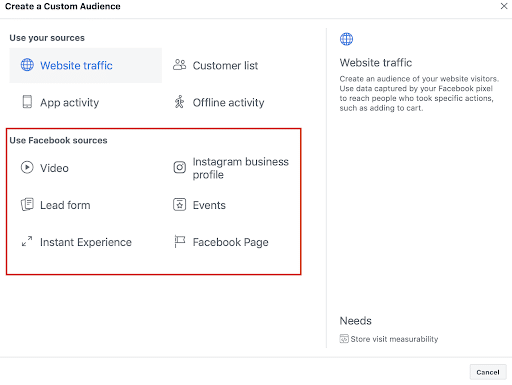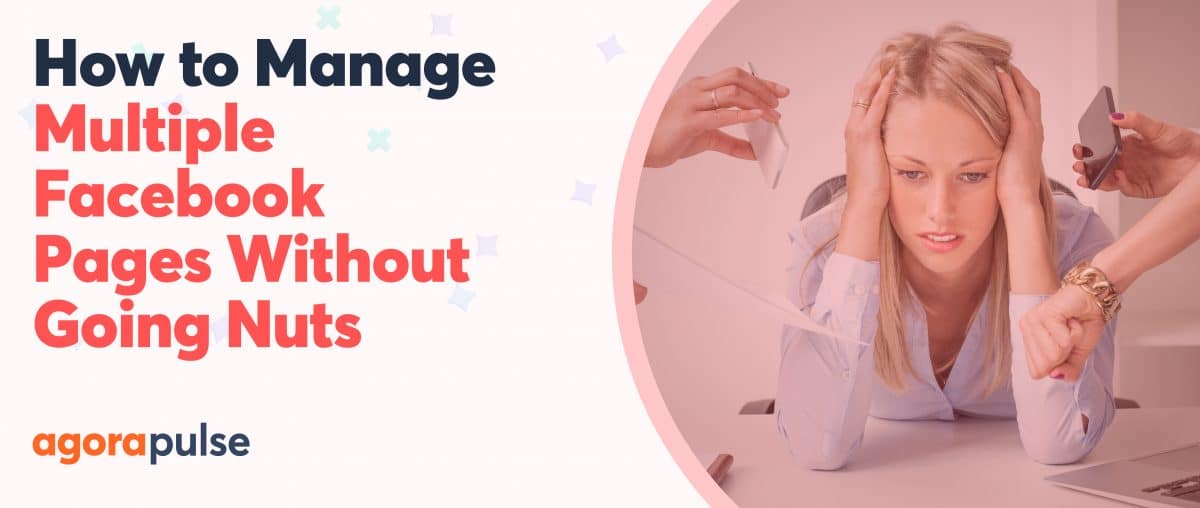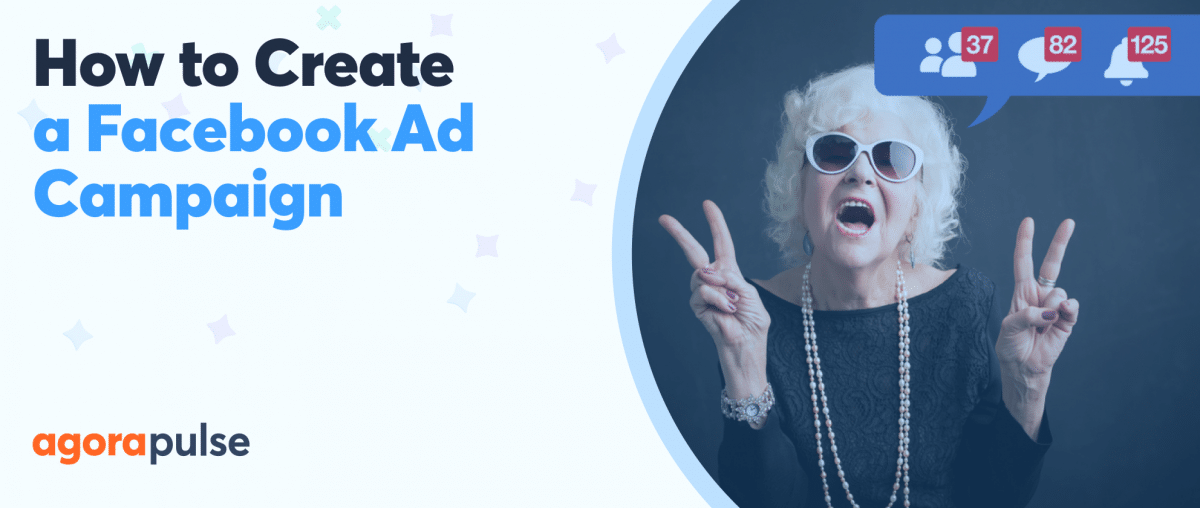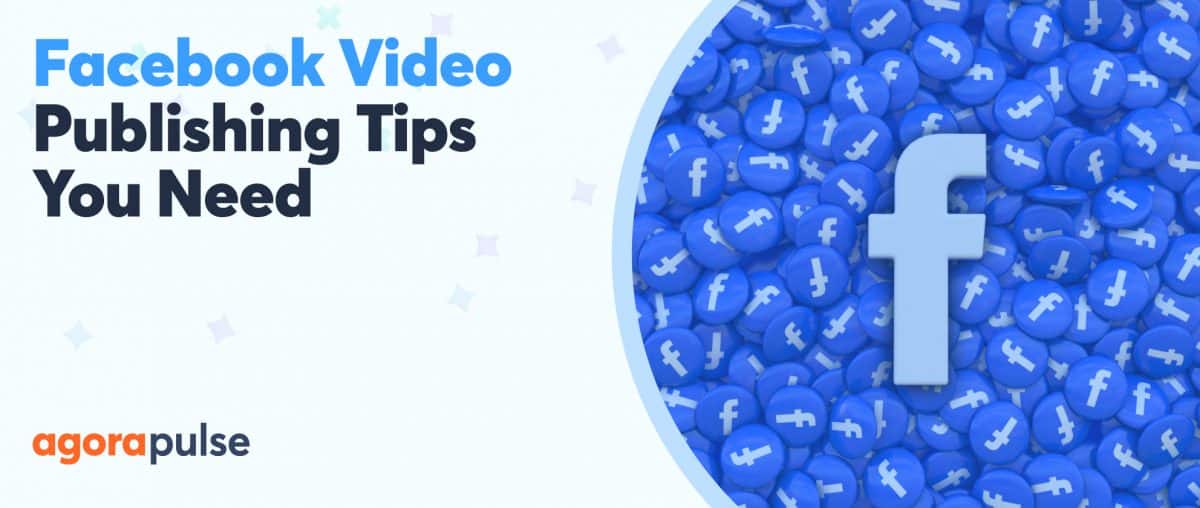Capture users’ interests and nurture them every step of the way until they’re ready to purchase by using highly targeted Facebook ads. Here’s how to get started.
Every brand can sell on Facebook, especially with a combination of Facebook Ads and organic posts. But the key to selling isn’t to just put a ton of content out into the digital world.
Instead, you need to have a Facebook sales funnel in place.
What Is a Facebook Sales Funnel?
A Facebook sales funnel is designed to capture users’ interest and nurture them until they’re ready to purchase.
You use relevant messages appealing to users at different stages in consideration for purchasing to slowly prod them closer to conversion.
You can do this with organic posts … but doing this is often more effective with reinforced or spearheaded with highly targeted Facebook ads for users in particular stages of the funnel.
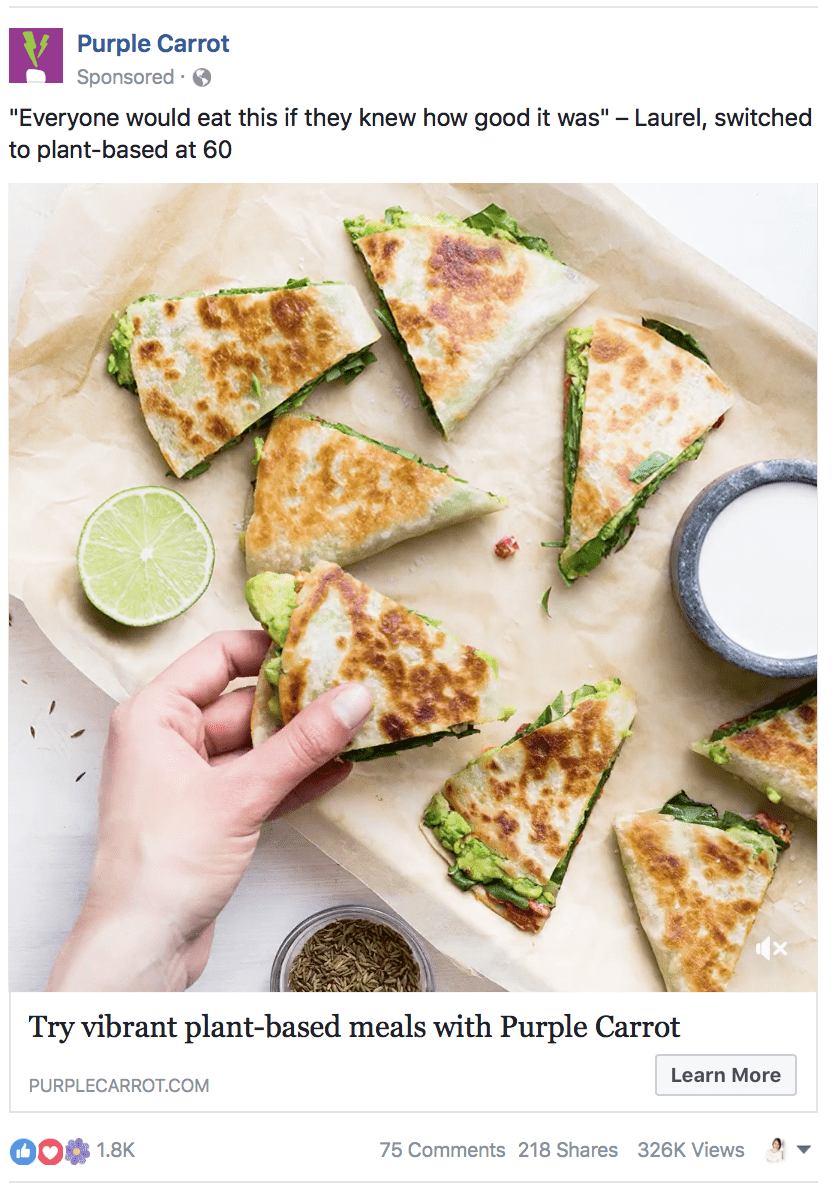
Until the last few years, most people had never heard of meal delivery outside of a frozen pizza. Now they’re selling like crazy through Facebook Ads.
Facebook has huge selling power—but not without a sales funnel.
Users log onto Facebook for recreation and to offend relatives with their political beliefs … not to purchase random products they’d never thought of before.
Sales funnels are designed to generate demand, reminding users about pain points or needs they didn’t know they had. A Facebook sales funnel will help you stand out from the other white noise and get the conversions you hope to see.
The Four Stages of a Facebook Sales Funnel
Plenty of businesses are familiar with the digital sales funnel, which is made up of four or five different stages, depending on who you ask.
These stages are …
- Users discover and are first made aware of your brand and product.
- Users now are aware of your product and are interested. They may consider purchasing.
- Users at the purchase stage of the sales funnel are ready to purchase from you.
- Users in this stage of the sales funnel have purchased, but you shouldn’t forget about them; you should continue to nurture these relationships so they become long-time clients instead of one-time customers.
The stages of a digital sales funnel and Facebook sales funnel are the same. But the way you go about executing them will slightly different, and the specifics vary slightly.
Creating a Facebook Sales Funnel
You can use different types of content and ads to appeal to users in all different stages of the sales funnel.
Facebook Ads are all about creating interest instead of just waiting customers to decide they need to find you, so it’s the perfect medium to drive sales.
Ready to start creating your Facebook sales funnel? All you have to do is follow these four steps.
1. Generate awareness
Users can’t move through the sales funnel until they’re in it, after all. You can use several strategies to generate awareness. These include:
- Run Facebook Ads targeting users who might be interested in your brand. Make sure these users are not connected to your Page. You can use Lookalike Audiences off high-value Custom Audiences. These ads should be a quick introduction for what your product is and why users need it.
- Run a referral contest. You can host a social media contest and offer users extra entries if they refer a friend to the contest who signs up. Once they do, you have gained their awareness of you and their email address, too, to use retargeting campaigns. Be careful that you don’t violate terms of service. (For example, don’t ask users to tag each other in a post.)
- Create organic posts to be engaging. Ask questions and ask for your customers’ opinions. When they answer, the entire post may show up in their friends’ feeds. It also acts as social proof along the way.
Agorapulse’s reporting tools can help you identify your most engaging content, so you can create similar content in the future to get more comments, likes, and shares. This will increase your visibility quickly.
2. Appeal to pain points and overcome objections
During the consideration stage, you need to prove to users why they absolutely need your product. This means appealing to pain points and simultaneously overcoming any objections they have.
To do all that, you can …
- Run retargeting campaigns on users who have expressed interest. You can target users who watched your video ad all the way through or those who visited your site.
- Answer all comments on your ads. Users are trying to decide whether you’re worth their time (and money). So, this is your chance to overcome your objections and to fight the objections other commenters present. Have you ever seen comments that say something like “this is stupid, who would buy that?” You want to nip that in the bud.
Agorapulse shows you every single comment on your Facebook Ads. Use this to identify both trouble makers and user questions like “is this watch water resistant?” and you’ll be able to nudge users further towards the sales funnel.
- Use ads and organic posts that list specific features and benefits of your products to remind users why they need them.
3. Offer an immediate incentive for a purchase
Users lingering just at the front edge of this stage are ready to purchase. You just need to give them a little nudge.
You can do this by:
- Running ads with special discounts and offers like free shipping, 15% off your first order, and information about flash sales—“only 24 hours left!” These messages create urgency while simultaneously offering incentives for users to convert. Who doesn’t love saving a little money, after all?
- Running carefully targeted ads that focus on specific use cases of the product that users have expressed interested in. You can do this by using Custom Audiences from your site to show users products they’d been viewing.
4. Encourage repeat purchases, upselling, and referrals
The battle isn’t won just because a customer converted for the first time. Because the acquisition cost of a new customer is much higher than retaining old customers, you want to keep new customers engaged.
In this stage of the sales funnel, customers (hopefully) trust you more, so you should use content to drive further purchases with a higher purchase value, and encourage referrals.
Strategies that can help with this include …
- Retargeting high-value customers with ads offering special “loyalty” perks, like free shipping or $10 “just because.”
- Reminding users in organic posts and ads about your referral programs, and that they can get discounts or other incentives when they refer new clients to you. Your loyal customers will give you raving reviews and can sell your business better than anyone else.
- Running ad campaigns based on purchase history, where you can show customers complementary products that will go well with what they purchased in the past. You can use carousel ads to show them different variations of these products, featuring higher-priced items in the mix to increase the purchase value.
How to Create an Entire Sales Funnel With Facebook Ads
Above, we talked a lot about how you can use Facebook Ads to better connect with your target audience at relevant stages.
In many cases, brands are relying heavily on Facebook Ads sales funnels, using ad campaigns to reach targeted cold audiences and nurture them through to conversion with nothing but ad campaigns.
The advantage here is that, though not free, these ads allow you to show what are essentially autoresponder-styled messages based on specific actions that trigger them. You can also get exceptional reach.
If you’re creating an entirely ad-based Facebook funnel, here is the general progression of steps that you can take.
1. Create a semi-targeted ad to appeal to specific niches of your target audience, choosing an introductory message because you’re targeting cold traffic
Telling your brand’s story and/or focusing on USP is a great way to garner attention here and make your brand memorable. Video campaigns are a strong choice for retargeting.
You can use interest-based cold audience targeting, but it’s also a good option to create a lookalike audience off a high-value custom audience, too.
2. Create a campaign retargeting based on video views of the first campaign or clicks to the landing page
Show slightly more targeted messaging here, promoting your products or services directly and highlighting features or benefits.
Carousel Ads and Collection Ads are great choices here. They’re able to quickly showcase a number of different products of services quickly. In this case, more diverse users can see something they like, click on it, and then be shown more targeted ad campaigns.
3. Consider running a lead generation ad
Show users an ad campaign based on what they clicked on last time around, which may include a lead ad or another carousel ad featuring similar products.
An alternative for some B2C products here may include using dynamic ads to show users ads focusing on products they’ve viewed already.
4. Run yet another retargeting campaign, but this time focusing on sales
You can offer users a first-time customer discount, free shipping, or offer an intro package or deal. This is what can take interested users (who have been interacting and not converting) into the realm of actual customers.
5. Run a follow-up campaign to increase repeat purchases
Sometimes, these campaigns are even run months later, giving users enough time to need to order their next round of something like carpet cleaning or dishwasher detergent. They serve as a reminder to purchase again, re-engaging customers who may have otherwise fallen off and bring the cycle full-circle.
You can adjust these stages as necessary to fit your audience and their actions.
High-value purchases that come with big price tickets may need to nurture customers longer, for example. And some B2C products won’t really need to be using lead ads.
Adjust as you see fit.
How Will Sales Funnels Work With the Upcoming Clear History Tool?
Right now, we’re in an interesting time where the face of retargeting (which marketers and brands have been leaning heavily on for years) looks like it may be changing soon. This is all because of the impending Clear History Tool.
We cover the topic in-depth here, but here’s the gist: Facebook will soon be releasing a “much-anticipated” tool that allows users to delete all the off-Facebook activity the platform has tracked. That includes their browsing history that Facebook’s Pixel was previously able to track. Facebook has since confirmed that this may interfere with advertisers’ ability to retarget.
There will likely be some users who don’t wipe the information that Facebook has saved regarding their browsing history. But in the middle of the privacy concerns, many users will.
When this is the case, it’s going to become more important than ever to utilize on-platform retargeting. This includes the following options, allowing with customer lists that you upload manually:
Using more video, more lead ads, and more engagement-oriented retargeting could become the best way to reliably retarget to more users, so once the tool rolls out, it will be good to start making changes quickly.
Plan your ad funnels strategically now, so you’ll be able to make the shift if and when necessary.
Download your FREE Facebook 101 workbook and essential guide.
Troubleshooting Your Sales Funnel: What Happens If It’s Not Working
Facebook Ad campaigns can be so fickle. In many cases, brands utilize enormous amounts of split testing just on a single ad to see what works.
Funnels, therefore, can be particularly difficult. There are so many factors and touchpoints involved, so it can be difficult to assess what’s causing the problem.
Remember that your audience will typically get smaller and smaller as it moves through the funnel. Plenty of people may be interested in your initial video, for example, but the closer they get to conversion, the more they see that you offer isn’t a fit for what they need for whatever reason.
This is normal.
If, however, you’re seeing major drop-offs and your conversion rates on a certain funnel are lower than others or a campaign isn’t as profitable as you think, you’ll need to assess the funnel overall and troubleshoot it.
There are three common problems that cause funnels to struggle: a weak point in the system, a problem with audience targeting, or too-many ads that don’t move users through the sales funnel.
Here’s how to troubleshoot your sales funnel.
Find the drop-off point
Sometimes, the problem is simple but major in your ad funnel, like an ad campaign that’s just not doing its job or having a landing page that doesn’t resonate for whatever reason.
Look carefully at all the ads in your funnel, and consider what the typical action you’d be going for on each one would be. This could be video views, clicks, conversions, or something else. Find the ad where there’s a big discrepancy and then look closely there.
For example, if you see a lot of lead ads being opened but not filled out, take a look at why. This could be the reason they’re not making it through the funnel. Maybe the form is too long, asking too many questions.
You may also notice that a landing page could be the problem. This may be the case if your ad gets a lot of clicks but very few conversions. In this case, the landing page may not match up with what the ad offers. Or it may not overcome objections well enough or inform users enough to drive them to the next step.
Examine the audience
Take a close look at the audience that you’re targeting. Is the audience sample size so small that it will be hard to get enough people through the funnel? That can happen, particularly with very small custom audiences.
You also want to align your buyer personas with the ads you’re targeting and make sure that the messaging is on point.
Agorapulse, for example, has benefits to people of all sizes. It’s a huge asset to social media practitioners trying to manage clients’ profiles, for example, but if a social media worker saw an ad geared to YouTube stars for comment moderation or an ad for corporations about syncing up the whole team, it wouldn’t resonate.
Look for discrepancies in audience targeting and what your ad is offering. This will often be an issue early-funnel as long as you’re keeping your basic strategies and messaging similar throughout.
Reflect on the number of touchpoints
Some funnels need to be long in order to get users on board. Car dealerships, for example, may need years-long sales funnels to get users into the office and ready to buy, while a company selling bone broth might just need two or three well-targeted ads to get the sale.
A lot of funnels will focus on brand awareness before offering a reason to convert, like that discount, sale, intro package, or something else. If this offer doesn’t come soon enough, it’s actually possible to lose a viewer’s interest.
Similarly, if you have a high-cost, high-value product or service, make sure you take the proper steps to get people on board. A college trying to recruit graduate students, for example, would likely benefit more from lead ads or Messenger ads instead of immediately dropping users at an application page.
It will likely involve some testing in order to find the right number of campaigns within the funnel, but as keeping your campaigns updated and fresh can guide you there.
In Conclusion
If you want to turn your Facebook into a selling machine, you need to have a Facebook sales funnel in place. This funnel must be designed specifically for Facebook users, even if you already have another sales funnel you use on your site, so that it will be most relevant and persuasive to the audience you have there. When used correctly, the sales funnel with not only capture the interest of users looking for your product but can create demand for it from an audience who wasn’t even looking.
* * *
Get started on saving time and energy on your own social media management! Check out our free trial of Agorapulse to help you schedule, track, and measure all your social media efforts.

